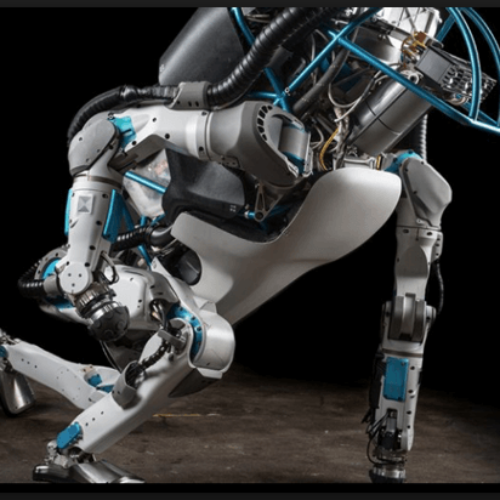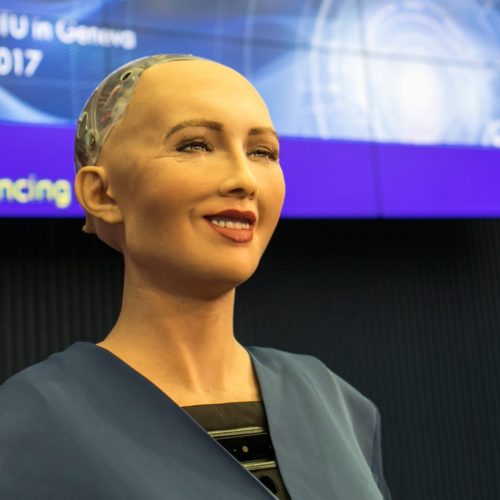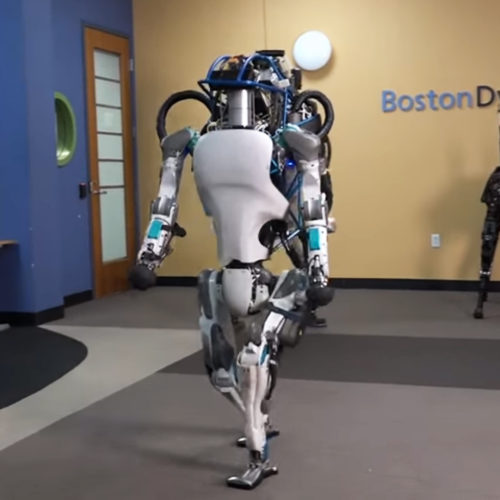The Floating Bird-Like Robot
Throughout history, humans have always envied a bird’s ability to fly and their nimble design. However, one incredible ability this creature also possesses is the ability to hover. For instance, if a bird comes across a patch of rough terrain, they won’t trip like a human, they’ll simply “hover” over the obstacles. Birds aren’t always soaring around in the sky, thankfully they have some tricks up their sleeves for ground movement too. Recently the long-running trend of attempting to make either a floating bird-like robot or a walking robot has potentially come to an end. “Everyone is working on drones or bipedal locomotion, “ says Caltech roboticist Soon-Jo Chung, “We want to lay the groundwork for combining these two different types.”
Making A Floating Bird-Like Robot
Chung and his team at Caltech have recently unveiled their newest development dubbed ‘’Leonardo”. This device walks on two legs primarily to get around but also uses thrusters attached to its torso to move like a bird. Its main mode is a sort of hover walking hybrid, which if proven successful could help to carry injured humans into safe areas, or quite outlandishly to explore the surface of other planets. Although the tests look extremely promising, it would be foolish to get excited at this stage, Leonardo can not yet even walk without a tether, so he is far from being able to clamber up objects.
The device stands at two and a half feet tall and weighs just six pounds, largely due to the intelligent use of carbon fiber. Capable of travelling in a similar way to that seen with bots such as Atlas yet, also capable of much more. One of these extra capabilities is the ability to catch itself, unlike Atlas which can at best scramble to regain footing, Leonardo can simply activate the right set of thrusters in order to pick itself back up, almost scary to think that it cannot fall over. “You can take a couple of steps to avoid falling, but what if that fails?” pondered Northeastern University roboticist Alireza Ramezani, Leonardo’s developer and designer. “The thrusters in this scenario can make the system almost fault tolerant.” Basically, they offer an almost ensured backup plan in case the legs fail.
Obviously combining the robotics of flight and bipedalism is a great feat to achieve, bipedal robots have not even been perfected yet let alone bipedal/hovering. Robots like Atlas are impressive but they use an incredible amount of energy even just when standing, they are constantly correcting themselves (something humans do without even noticing). One of the main goals with Leonardo because of this is to try and make it efficient at this sort of idling, instead of wobbling and adjusting. “It can kind of defy the rules of gravity in a sense,” says codeveloper Morteza Gharib. He said this as when the thrusters are activated it actually doesn’t use more energy than usual, possibly because its feet are still always touching the ground.
Perhaps a floating bird-like robot is not so far away after all.
You might also like
Now They Can Open Doors!!!
Boston Dynamics has made yet another step forward by producing a version of SpotMini that can open doors. Some people have described the robotic innovations of Boston Dynamics as scary,
Meet The Saudi Arabian Robotic Citizen
In October 2017 Saudi Arabia granted citizenship to a robot, the first time this has happened anywhere in the world. Saudi was not the only ones impressed with Sophia. In
Atlas – well balanced humanoid robot
Walking upright without any problems with balance? For almost 1,80 m android this kind of task should not be easy, but for latest version of Atlas it is a piece of



